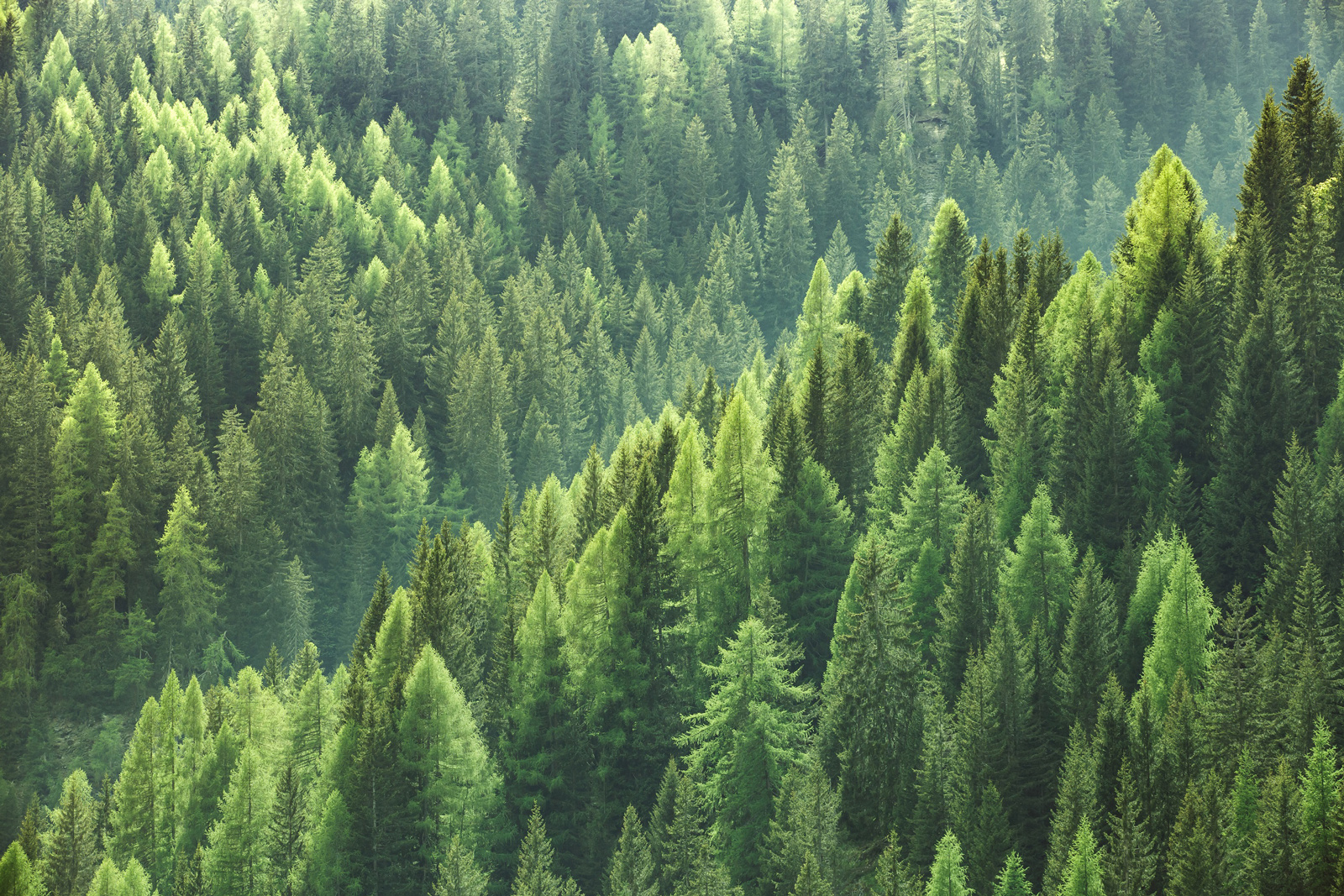
How forests absorb carbon dioxide
Forests can function as carbon sinks, absorbing the climage-changing gas carbon dioxide from the atmosphere and storing it for long periods of time in trees and soil. How the carbon cycle works:
ABSORBTION
Trees
Carbon is stored in trees and plants as they absorb carbon dioxide from the atmosphere to grow. Trees are very important because they live a long time and therefore store carbon for many years
Soil
Decaying organic matter, such as dead trees, branches, plants and leaves transfer some carbon below ground to be held in the soil, which can hold it for long periods of time. Roots of living trees also transfer carbon to the soil.
ABSORBTION
Trees
Some carbon is lost back to the atmosphere through respiration of plants, forest fires and the decomposition of organic matter in the soil.
Forest products
Lumber and products made from trees still contain the carbon they absorbed. They hold it for long periods of time, not releasing it until the wood is burned or decays. Carbon is released in logging and manufacturing.
Timber is carbon negative cradle to gate
Kg CO2 per kg dry wood as consumed in UK 2013
-1.67
Carbon Sink
0.09
Processing
0.23
Kiln Drying
0.05
Distribution
0
Use
Timber absorbs and stores more carbon than it emits during processing and installation
Source: How The Timber Industries Can Help Solve The Housing Crisis, Report by the All-Party Parliamentray Group for the Timber Industries 21.2.2019
